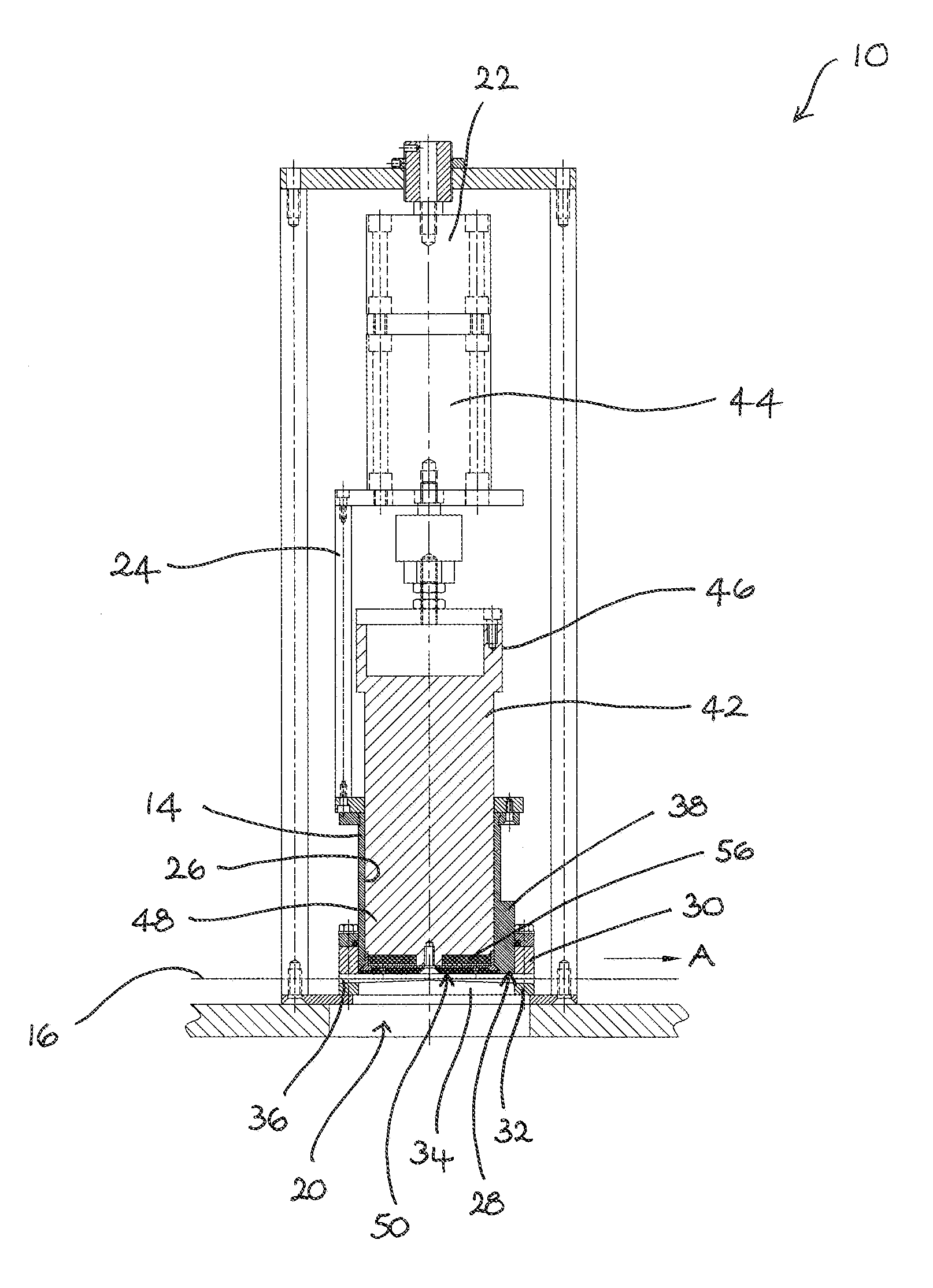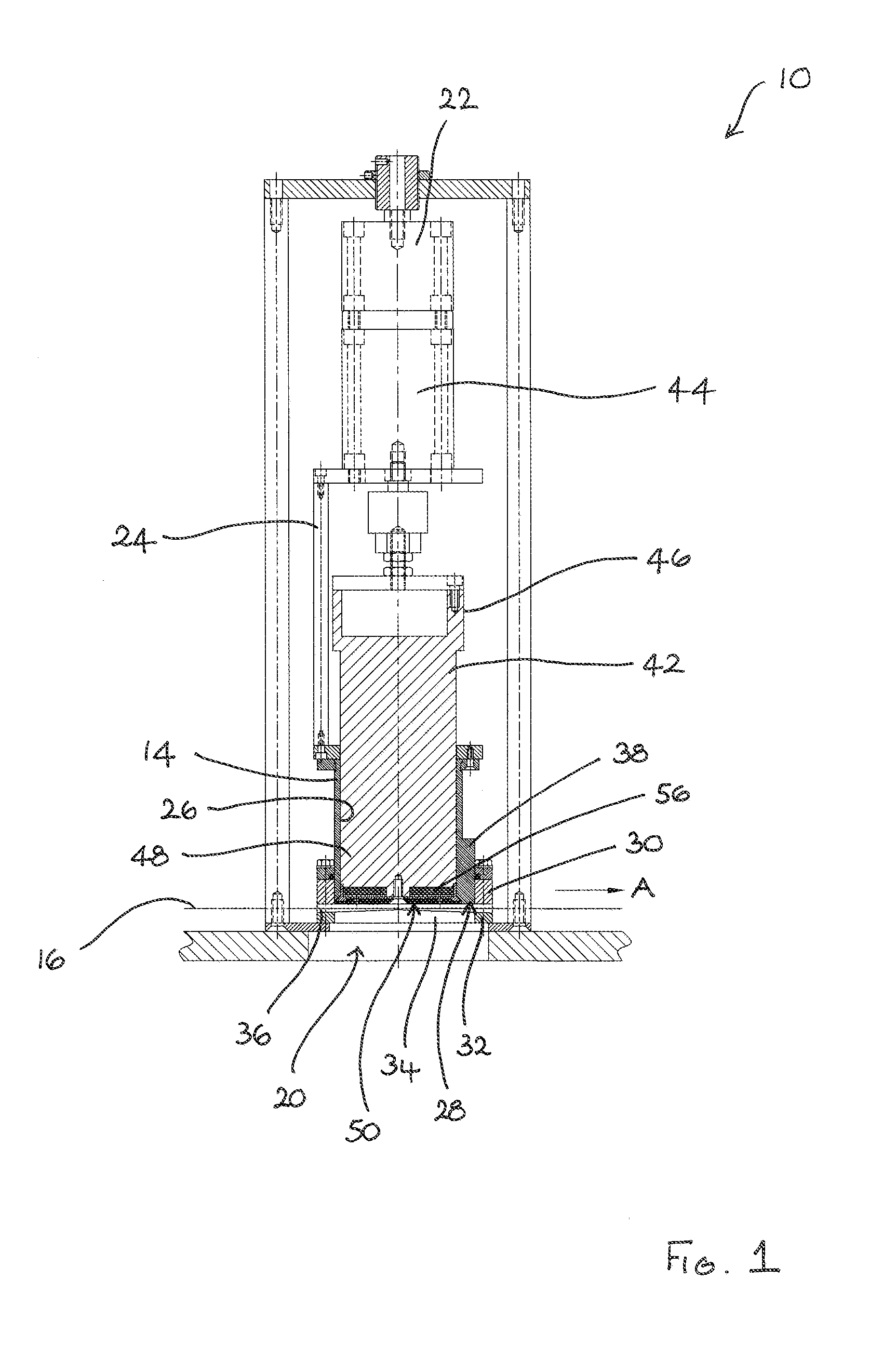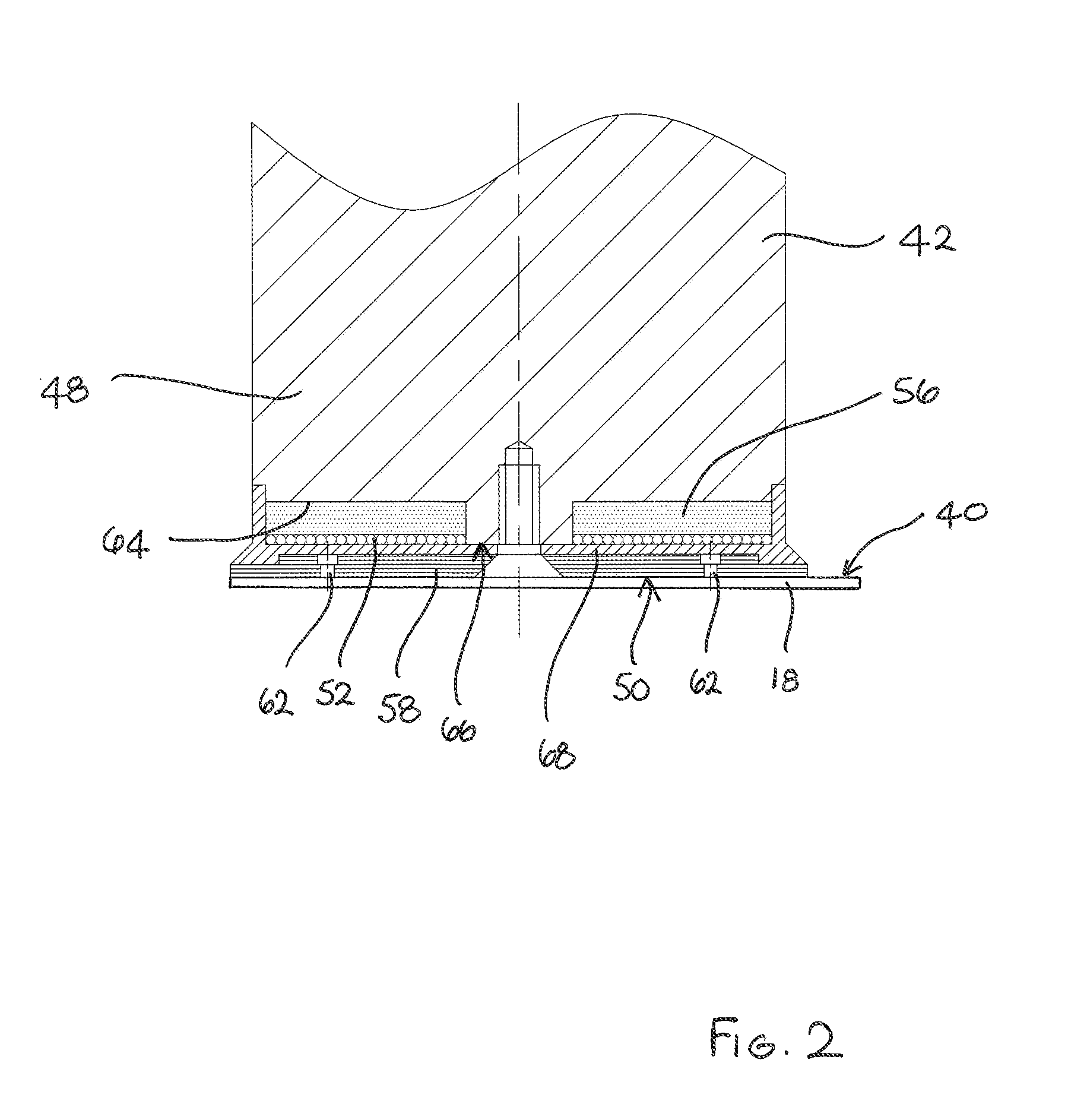Apparatus and method for sealing a container
- Summary
- Abstract
- Description
- Claims
- Application Information
AI Technical Summary
Benefits of technology
Problems solved by technology
Method used
Image
Examples
Embodiment Construction
[0038]Embodiments of the present invention will now be described by way of example only and with reference to the accompanying drawings.
[0039]Referring to the drawings, there is shown a container sealing apparatus 10 for sealing an open top of a container 12 (see FIG. 5). The apparatus 10 can be used to seal containers 12 formed from a variety of materials, such as glass or plastics, having a variety of geometries and intended for a variety of end uses.
[0040]The apparatus 10 comprises a cutting member 14 which is linearly displaceable between a first position shown in FIG. 1 and a second position shown in FIG. 5. During movement from the first position to the second position, the cutting member 14 cuts a portion of sealing material from a web 16 of sealing material to provide a cut portion 18 of sealing material for sealing to the open top of the container 12. The web 16 of sealing material is typically provided on a supply reel (not shown) and extends through a cutting and sealing ...
PUM
| Property | Measurement | Unit |
|---|---|---|
| Time | aaaaa | aaaaa |
| Electrical conductivity | aaaaa | aaaaa |
| Flexibility | aaaaa | aaaaa |
Abstract
Description
Claims
Application Information
 Login to View More
Login to View More - R&D
- Intellectual Property
- Life Sciences
- Materials
- Tech Scout
- Unparalleled Data Quality
- Higher Quality Content
- 60% Fewer Hallucinations
Browse by: Latest US Patents, China's latest patents, Technical Efficacy Thesaurus, Application Domain, Technology Topic, Popular Technical Reports.
© 2025 PatSnap. All rights reserved.Legal|Privacy policy|Modern Slavery Act Transparency Statement|Sitemap|About US| Contact US: help@patsnap.com



